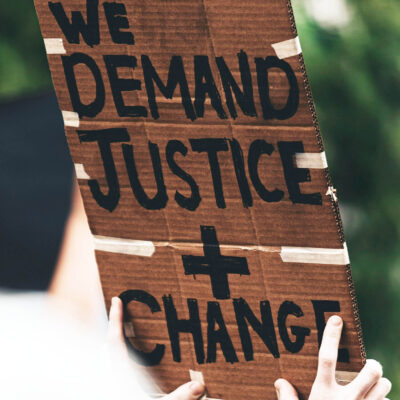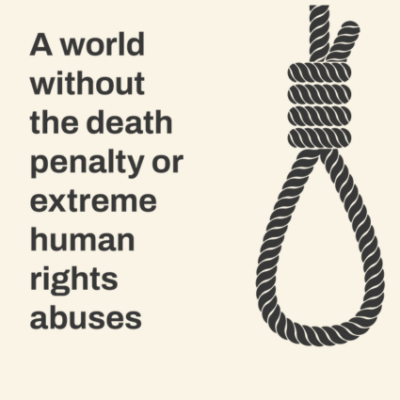In the last week alone, we have witnessed five executions, a terrifying increase in execution rates.
This is the highest amount in such a short timespan that we’ve seen in decades.

Death penalty: Official record of opposition
On average, an execution takes place somewhere in the world every 18 hours.
Add my nameYesterday, Alan Miller was executed using nitrogen gas.
For the second time a US state used a method of execution rejected by veterinarians for killing animals.
This was Alabama’s second attempt to execute Alan Miller. Previously, they attempted to execute him via lethal injection. When an execution by lethal injection is ‘botched’ it results in torturous pain. Judges have compared it to “waterboarding” and being “burned at the stake”.
Like lethal injection, this is human experimentation.
Whether forcibly suffocating people with nitrogen or injecting them with substandard drugs acquired in secret, states are carrying out dangerous human experiments that risk causing extreme suffering.
Across the US, executing states are going to ever more extreme lengths to prop up the death penalty claiming:
- Executing people who have previously been subjected to torturous botched and aborted executions is fine, no matter how much the person suffered the first time.
- Buying execution drugs from pill mills is an appropriate use of taxpayer money.
- Acquiring fentanyl in secret and using it to kill people is A-OK, even though it risks putting more of this dangerous drug of abuse on the streets.
- That it is not a problem that black people are twice as likely to suffer a botched lethal injection than white people.
This year we published our report, ‘Lethal Injection in the modern era: cruel, unusual and racist’ which reveals the shocking realities behind the lethal injection.
What is a botched lethal injection execution?
A botched execution is an execution gone wrong, often resulting in prolonged pain.
Our new report, ‘Lethal Injection in the Modern Era: Cruel, Unusual and Racist’ analysed lethal injections over the last five decades. We found that Black people had 220% higher odds of suffering a botched lethal injection execution than white people in the modern era of the death penalty.
It also finds that botched lethal injection executions occurred regardless of the drugs used and irrespective of whether a one-drug or a three-drug protocol was used.
Beyond the significant racial disparities identified by the research, our new report also found that botched executions typically lasted an extremely long time: over a quarter (19) of botched lethal injection executions lasted over one hour, with over one-third (26) lasting more than 45 minutes. The longest lethal injection execution in 2022 took over 3 hours.
Can lethal injections fail?
Yes – lethal injections can fail.
Lethal injections are more likely to go wrong than any other execution method. And when an execution is ‘botched’ it results in torturous pain. Judges have compared it to “waterboarding” and being “burned at the stake”.
In the modern era of executions, there have even been six lethal injection executions that have had to be abandoned because the process did not work, and these individuals survived the process. Their names are Romell Broom, Alva Campbell, Doyle Hamm, Alan Miller, Kenneth Smith and Thomas Creech. There was one additional individual – Clayton Lockett – whose execution was halted due to complications, but he died after 45 minutes in the execution chamber due to a massive heart attack.
Why would a lethal injection go wrong?
Lethal injection executions are frequently administered by prison officials with no medical training. The drugs are often sourced from illicit suppliers or illegally diverted from their designed and approved purpose. And lethal injection is entirely experimental, employing drugs in untested combinations and quantities.
Why is the use of nitrogen gas another example of human experimentation?
Major manufacturers of medical-grade nitrogen gas have opposed their products being used in executions, and veterinarians have rejected it for use for killing animals.
Alabama is currently the only state that has used it in an execution.
As with lethal injections, nitrogen executions are the latest iteration of US execution states experimenting with methods of killing. Like lethal injection, the new method of nitrogen hypoxia has been dressed up as being more humane on without any evidence or testing. And like lethal injection executions, it proved to be anything but humane.
What lethal injection cocktail is used for the death penalty?
Most drugs used to kill people by lethal injection are life-saving drugs that are intended to improve lives, not end them. All approved manufacturers of these drugs oppose the misuse of their medicines in executions.
The sedatives and barbiturates that are often used in executions are needed by hospitals across the US and many are in dangerously short supply.

Has anyone ever survived a lethal injection?
To date, six people have survived lethal injections, one as recently as February 2024.
Three of these executions took place in the state of Alabama.
Both Kenneth Smith and Alan Miller were amongst the survivors. After surviving a traumatic attempt, they simply returned to their cells on death row.
Both have now been executed by the state of Alabama using nitrogen gas.
Capital punishment is racist at every level, including in the execution chamber. End this now.
Racism does not just exist in the US’s police stations and courts. It extends to the execution chamber too.
End this nowWhat’s race got to do with the lethal injection?
For decades, studies have documented that the death penalty discriminates against Black people, who face disproportionate rates of capital charging, death sentencing, execution, and exclusion from capital juries. But now, researchers at Reprieve uncover that racial disparities extend into the execution chamber too.
One of the most significant findings to emerge from our analysis is that Black people had a 220% higher chance of suffering a botched execution than white people in the modern era of the death penalty in America. It also found that:
- In the state of Arkansas, 75% of botched lethal injection executions were of Black people, despite executions of Black people accounting for just 33% of all executions.
- In the state of Georgia, 86% of botched lethal injection executions were of Black people, despite executions of Black people accounting for just 30% of all executions.
- In the state of Oklahoma, 83% of botched lethal injection executions were of Black people, despite executions of Black people accounting for just 30% of all executions.
State secrecy and botched executions
Our new report also reveals regular state cover ups of issues that occur in executions. States have often reported executions going smoothly, when witness testimony clearly proves they did not.
This includes state cover ups about how they got the drugs, and secretly trialling new methods of executions and covering it up when executions go wrong. All to maintain the myth that lethal injections are humane.
Worse yet, executing states have passed secrecy laws prohibiting access to information on the drugs used. This includes critical information on the source and quality of the drugs.
This is worrying when the illicit and worrying procurement of restricted and unapproved drugs can contribute to lengthy and painful botched executions.
Our new research uncovers the explicit link between the two.
